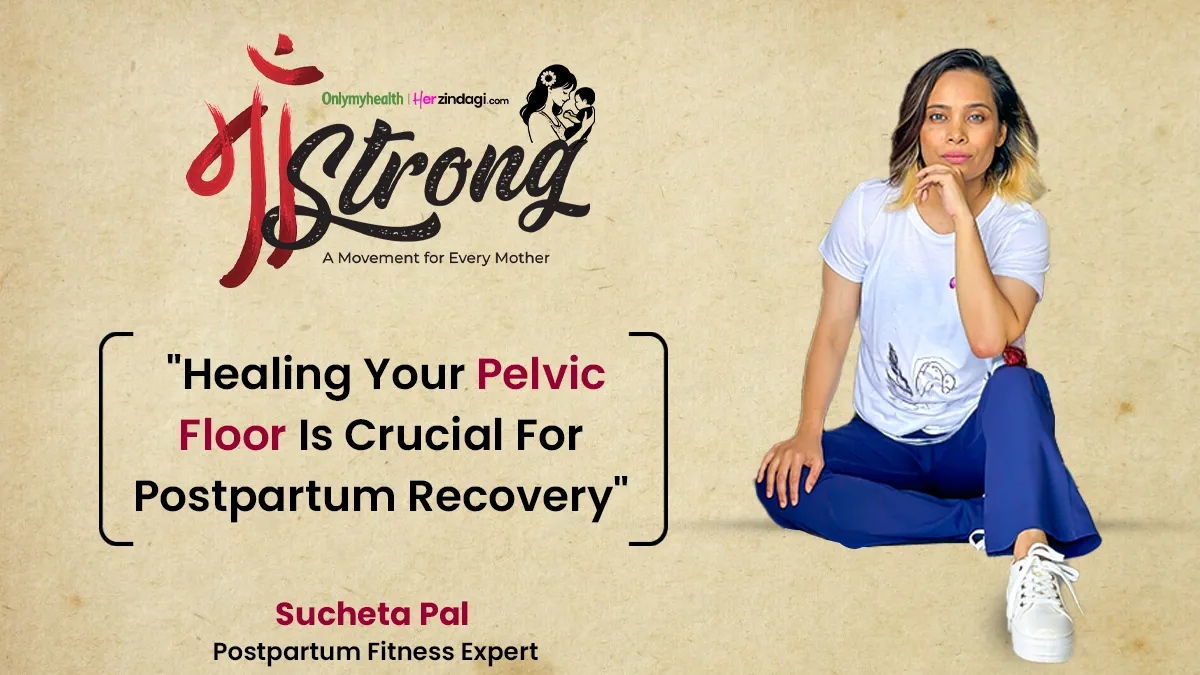
After years of working in maternal fitness, I’ve seen the incredible strength of women—and I’ve also seen how little support we’re given when it comes to healing after birth, especially where it matters most: the pelvic floor.
Table of Content:-
Let’s be honest: you just brought a human into the world. That’s powerful. And your recovery deserves more than “just do your Kegels.”
Let’s go deeper. To dig more into how strengthening pelvic floor plays a major role in post-partum recovery, let’s understanding more about Pelvic floor and its importance in the article below.
What Is the Pelvic Floor (and Why It’s So Important)
Your pelvic floor is a group of muscles that sit like a sling at the bottom of your pelvis. It supports your bladder, uterus, and bowel. It helps you with core strength, balance, and even sexual function.
During pregnancy and birth, this area is stretched, stressed, and often weakened. The result? Many women experience:
- Leaking when they sneeze or laugh
- A feeling of heaviness or pressure "down there"
- Discomfort with intimacy
- A disconnect from their core
But here's the good news: you can absolutely rebuild strength and function—with modern, functional movement that does more than clench and squeeze.
Also Read: Weak Pelvic Floor Can Be Strengthened With THESE 5 Effective Exercises
3 Functional, New-Age Pelvic Floor Exercises
These exercises work with your breath, alignment, and whole body movement to gently restore pelvic floor strength the way nature intended.
View this post on Instagram
1. 360° Core Breathing
This is your foundation. It connects your breath, diaphragm, core, and pelvic floor.
- Sit or lie comfortably.
- Inhale through your nose and feel your ribs expand out to the sides and your belly gently rise.
- Exhale through your mouth like you’re blowing through a straw, feeling your belly draw in and pelvic floor lift gently.
- Repeat for 5–10 breaths.
This helps you engage the pelvic floor naturally, without over-tightening.
Also Read: Why Is Exercise Important After C-Section? Expert Explains
2. Glute Bridge with Breath Connection
Great for waking up the glutes (which support your pelvic floor) and syncing breath with movement.
- Lie on your back, knees bent, feet flat.
- Inhale, relax your belly.
- Exhale, lift your hips while drawing your pelvic floor and lower belly in gently.
- Inhale to lower.
- Do 10–12 reps slowly and mindfully.
3. Happy Baby Rock (for Pelvic Mobility & Release)
View this post on Instagram
Yes, relaxing the pelvic floor is just as important as strengthening it!
- Lie on your back, grab the outside of your feet or thighs, knees bent and open.
- Gently rock side to side.
- Breathe deeply into your belly and pelvic area.
This opens the hips and encourages pelvic floor relaxation—vital for balance and healing.
Gentle Reminders & What to Avoid
Skip high-impact workouts (running, jumping, planks) early on.
If you’re feeling pressure, leaking, or pain, it’s a sign to slow down—not push harder.
See a pelvic floor physio if you can—they’re amazing and worth every visit.
Your Recovery Deserves Respect
Healing your pelvic floor isn’t just about avoiding leaks—it’s about feeling confident, strong, and supported in your own body. These exercises aren’t just “post-baby rehab”—they’re a lifelong foundation for strength and wellbeing.
Also watch this video
FAQ
How long does it take to heal the pelvic floor after birth?
Ideally, it may take a few weeks or a couple of months for your pelvic floor to heal completely after giving birth. However, this depends on a lot of factors including delivery difficulty, size and weight of the baby and any complication occurred during childbirth.How to heal your pelvic floor after birth?
Do postpartum pelvic floor exercises under the supervision of an experienced fitness trainer.
How we keep this article up to date:
We work with experts and keep a close eye on the latest in health and wellness. Whenever there is a new research or helpful information, we update our articles with accurate and useful advice.
Current Version
Jul 11, 2025 19:35 IST
Published By : Chanchal Sengar